Photos with this report (click to enlarge) | |||
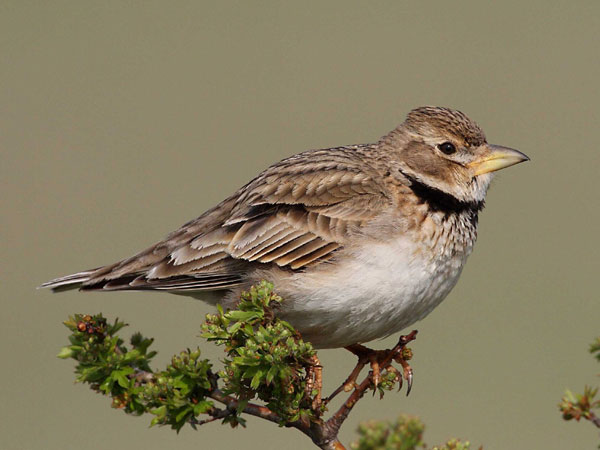 Calandra Lark |
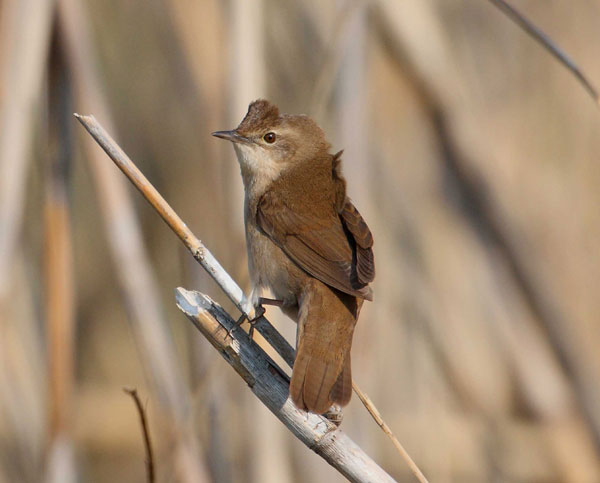 Savi's Warbler |
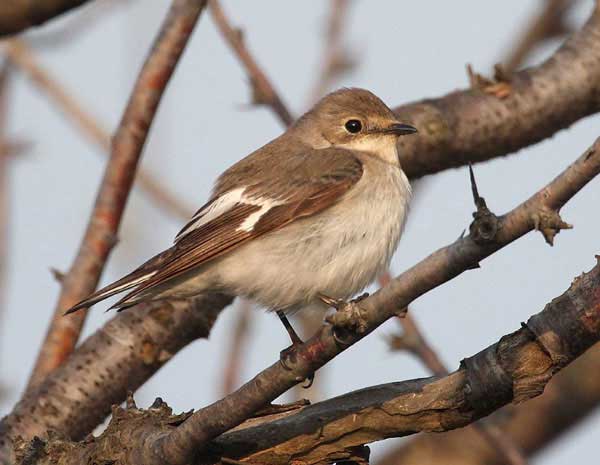 Collared Flycatcher |
|
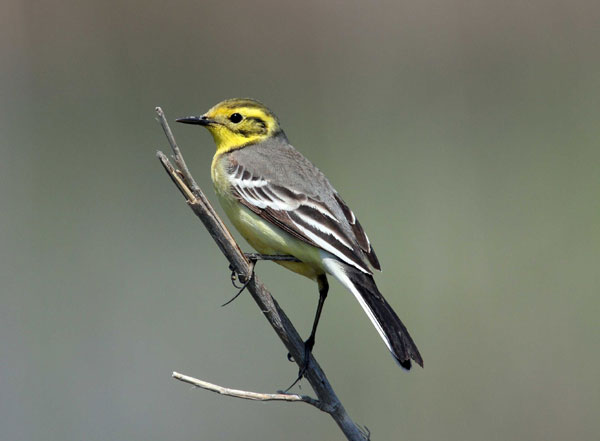 Citrine Wagtail |
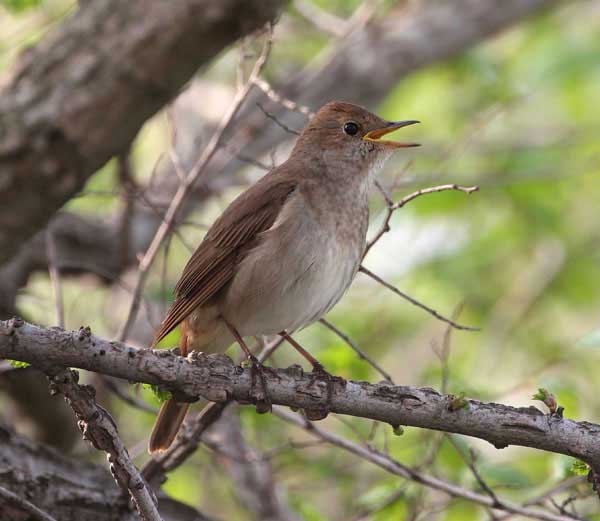 Thrush Nightingale |
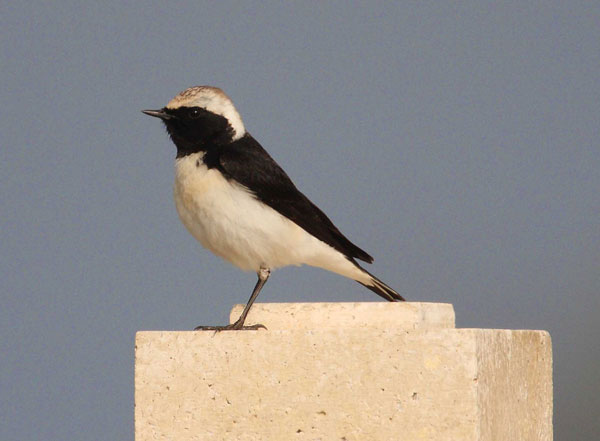 Pied Wheatear |
|
Rationale
A short break to spend a week birding with my dad who is a spritely 86 but needs the birds to come to him rather than the other way around. Most birding was done either from the car or on relatively easy walks along flat areas. Migration time along the Black Sea seemed ideal.
Timing
Late April seemed ideal but, in fact, from 24th April to 1st May we were probably 10 days too early for the specialities of the area. In terms of numbers, migration was huge with Whinchat & Redstart in particularly large numbers and Collared & Pied Flycatchers in impressive numbers as well. However it was only the last couple of days that we saw Pied Wheatear, Barred Warbler & Ortolan and just 2hrs before we left on the first that we saw our first Red-backed & Woodchat Shrikes and had 7 singing Thrush Nightingales. We saw no Hippolais Warblers, Lesser Grey Shrikes, Roller or Black-headed Buntings and the only Paddyfield Warbler we saw was a wet migrant in a rain storm.
Position
We rented a Villa in Balgarevo and this was ideal, only a 5 minute drive to the Cape and 30 mins from Shabla and Durankulak. We had both Collared & Pied Flycatcher in the street. Balgarevo has a couple of good restaurants. There is also accommodation in Kavarna which is 10 minutes further away and at Tyulenovo, closer to Shabla and Durankulak. Note ,however for raptor fans, that most large raptors cut this corner off and head due north from about Albena towards the Danube and on from there.
Places Visited
Cape Kaliakra
Like a miniature Portland Bill, this rocky peninsular sticks out into the Black Sea where the coast takes a right angle north above Varna. The end of the peninsular is like a small rocky island with maybe 20 small trees, a cafe and a naval station. Only once did anyone give me any bother and that was when I was trying to photograph an Ortolan sitting on a radar mast. 200 metres back is a small ruined medieval town and then a further 200 metres back at the neck of the peninsular is another small patch of bushes. These are at the entrance gate and were probably the most productive area of all with breeding Barred Warbler as well as numerous migrants. You have to pay 1.5 Levs [around 50p] if you enter this area between 9am and 5pm. Further back along the peninsular are scattered bushes over Balkan steppe which could lift with migrants and then, closer to Balgarevo were some small plantations of low trees.
The Steppe area was awash with Calandra Larks and in the last few days Short-toed Lark, Tawny Pipit & Isabelline Wheatear arrived, just a single bird of the latter species as numbers have crashed with the disappearance of the Suslik from the area.
Bolata Valley
A small wooded ravine with small lakes and a reedbed in the bottom, accessed by travelling north for 600 mtrs of the road to Kaliakra immediately after the wind turbines. We had breeding Eagle Owl here as well as numerous migrants including Paddyfield & Moustached Warblers. This is the most northerly breeding locality of Olive-tree Warbler which hadn't arrived by the time we left.
Durankulak Lake
A large brackish lagoon separated from the sea by a sand bar about 50 mts wide. Standing on this bar allowed you not only to scan the marsh but also to witness a truly amazing visible migration of, amongst other things, herons, marsh terns, wagtails and larks. We flushed Great Snipe twice from the edge here. This area is best accessed on the road to the north heading towards the new small marina that is being built at Kocmoc. It is meant to be the easiest place in Europe to see Paddyfield Warbler but we were too early for these. We also took a track just after Vaklino and were able to drive around the south side of the lake to an area with huge numbers of birds including Citrine Wagtail and Collared Pratincole. Whether we would have found this area without Dimiter Giorgiev is very debatable.
Shabla Lake & Tuzla
Shabla Tuzla is easy to find by following the signs heading east just south of Shabla Village. Just before you hit the sea yo reach a T junction at a wooded campground. Turning onto the rough track to the right takes you to the Tuzla and it is possible to drive all the way down the west side on rough tracks. The campground is good for migrants and we had all three black & white flycatchers here. About 15 pairs of Paddyfield Warblers breed at this site.
The lake is north of the road to the campground but access seems impossible from here. Dimiter took us on a track past a disused dairy farm to the SW corner of the lake and this path is visible of Google Earth. There is also a track to the north but I doubt that it will be as easy to work as Durankulak.
Lake Srebarna
A 2 hour drive from Balgarevo the lake hosts a large colony of Dalmation Pelicans and a few pairs of Lesser Spotted Eagles. It is also easy to see Pygmy Cormorant here and we had excellent views of both Levant Sparrowhawk & Black Stork.
Albena
A self-contained resort halfway between Varna and Cape Kaliakra, it has some residual riverine forest complete with breeding Semi-collared Flycatchers and various woodpeckers. It would probably be a much better place to witness raptor migration than further east. It was very windy when we were there and we saw nothing exceptional.
Guidance
Dimiter Georgiev is not only a good birder but is a great guy. Contact him either for information or for a guiding service on neophrontours@gmail.com. Gosney's Finding birds in Bulgaria is good for Shabla and Durankulak but now is out of date for Kaliakra and unnecessary for Srebarna.
Photographic Note
Photography was fine from about 7.30-10.30 and 17.00-18.30. During the rest of the day there was too much light unless you got really close or used flash in shade
Black-throated Diver: Several passing off Cape Kaliakra and Durankulak
Great Crested Grebe:
Black-necked Grebe: Common off Cape Kaliakra and Durankulak
Little Grebe
Dalmatian Pelican: Lots at Srebarna
White Pelican: One at Srebarna
Common Shag: Common off Cape Kaliakra
Great Cormorant
Pygmy Cormorant: Lots at Srebarna, small numbers Durankulak
Great Egret: Lots at Srebarna, small numbers Durankulak
Grey Heron: Lots at Srebarna, small numbers Durankulak
Purple Heron: Several arrived at Balata Valley, Cape Kaliakra, Lots at Srebarna, small numbers Durankulak
Squacco Heron: Lots at Srebarna, Durankulak, Shabla & Albena
Little Egret: Lots at Srebarna and Durankulak
Little Bittern: One at Shabla
Black-crowned Night Heron: A few at Srebarna, Durankulak, Shabla
White Stork: A few at Srebarna and scattered around elsewhere
Black Stork: At least two soared overhead at Srebarna.
Common Spoonbill: A few at Srebarna, Durankulak & Shabla
Glossy Ibis: A few at Srebarna, Durankulak & Shabla. A flock of about 40 passed north of Cape Kaliakra on 25/4
Mute Swan
Greylag Goose: A few at Lake Srebarna
Ruddy Shelduck: 1 at Shabla Tuzla on both visits
Common Shelduck: Common at Cape Kaliakra and Shabla Tuzla
Northern Shoveler
Common Teal
Eurasian Wigeon
Mallard
Garganey
Gadwall
Common Pochard
Tufted Duck
Ferruginous Duck: Up to 30 at Srebarna & Durankulak with 4 at Shabla
Levant Sparrowhawk: A single showed very well at Lake Srebarna
Eurasian Sparrowhawk: One at Shabla Camp on 26th
Booted Eagle: A single soared in the distance at Lake Srebarna
Lesser Spotted Eagle: A single showed well at Lake Srebarna whilst an immature bird moved north over Balgarevo on 26th April
Common Buzzard: 2 on trip to and one soaring over Lake Srebarna
Long-legged Buzzard: a single bird moved north over Balgarevo on 26th April
Western Marsh Harrier
Hen Harrier; A single at Durankulak
Montagu's Harrier: A single over Lake Srebarna
Eurasian Hobby: Common with up to 30 at Lake Srebarna and several arrivals at Cape Kaliakra
Common Kestrel
Red-footed Falcon: Several groups at Yailata Steppe
Common Quail: Heard calling in the Bolata Valley and around Durankulak
Common Pheasant
Common Moorhen
Eurasian Coot
Water Rail
Black-winged Stilt
Pied Avocet: 2 at Shabla Tuzla
Collared Pratincole: About 15 around south end of Durankulak
Northern Lapwing: Several pairs around Shabla and Durankulak
Little Ringed Plover: A single at Shabla Tuzla on 28th
Curlew Sandpiper, A single at Shabla Tuzla on 28th
Little Stint: 20 at Shabla Tuzla on 28th
Common Snipe
Great Snipe: A single showed in flight twice at Durankulak on 28th
Black-tailed Godwit: Two at Shabla Tuzla on 26th
Whimbrel: One at Cape Kaliakra on 25th
Ruff
Wood Sandpiper
Green Sandpiper: Singles at Shabla Tuzla and Durankulak on 28th
Common Redshank
Yellow-legged Gull
Lesser Black-backed Gull: A single fuscus at Durankulak beach
Great Black-backed Gull: Single Albena 30th
Mediterranean Gull: Common at Cape Kaliakra and Durankulak
Little Gull: Several seen at Durankulak
Black-headed Gull
Whiskered Tern: Common at Srebarna & Durankulak
White-winged Tern: Common at Srebarna & Durankulak
Black Tern: Less common than other marsh terns at Srebarna & Durankulak
Gull-billed Tern: Several around and over Durankulak
Sandwich Tern
Wood Pigeon
Eurasian Collared Dove
Turtle Dove: Multiple arrivals at Cape Kaliakra and seen on roads elsewhere.
Common Swift
Alpine Swift: Amazing views of up to 30 at Cape Kaliakra
Eurasian Eagle Owl: Adult on nest in Bolata Valley, Cape Kaliakra
Common Kingfisher
European Bee-eater: Over Srebarna Village only
Common Cuckoo
Eurasian Wryneck: Two at the cape on 27th and one singing in Bolata Valley Cape Kaliakra on 29th
Great Spotted Woodpecker: In woods at Albena 30th
Syrian Woodpecker: Common
Green Woodpecker: In woods at Albena 30th
Skylark:
Greater Short-toed Lark: Small numbers at Yailata Steppe 29th and at Cape Kaliakra by 1st. Quite a few moved north at Durankulak on 28th
Crested Lark:
Woodlark: A few in suitable habitat on Yailata Steppe and on road to Bolata Valley
Calandra Lark: Abundant
Tawny Pipit: Seemed to arrive 28th and then again 30th
Red-throated Pipit: 2 with wagtails Durankulak on 28th
Tree Pipit: Several groups on passage at Cape Kaliakra
White Wagtail
Grey Wagtail
Citrine Wagtail: 2[male & female] with wagtails Durankulak on 28th
Blue-headed Wagtail: large numbers Durankulak on 28th
Black-headed Wagtail: Common in suitable habitat
Dubrowski’s Wagtail: Single with other wagtails Durankulak on 28th
Grey-headed Wagtail: Several with other wagtails Durankulak on 28th
House Martin: Arrived in numbers 29th
Red-rumped Swallow: At least 2 pairs in Bolata Valley
Crag Martin: Single in Bolata Valley 25th
Barn Swallow
Sand Martin
European Robin: In woods at Albena 30th
Thrush Nightingale: Fall on 1st May with 2 seen and at least another 5 heard Cape Kaliakra
Nightingale: Common
Isabelline Wheatear: Single male displaying near Balgarevo from 29th
Northern Wheatear: Small numbers Cape Kaliakra. Breeding in Balgarevo
Pied Wheatear: Up to 5 males arrived Cape Kaliakra on 27th
Black Redstart: Pair Cape Kaliakra and a different female 1st May
Common Redstart: Very common
Whinchat: Abundant
Stonechat: A pair in Bolata Valley
Common Blackbird
Song Thrush: In woods at Albena 30th
Mistle Thrush: A pair on steppe between Balgarevo and Cape Kaliakra
Cetti's Warbler: Singing in marshy woods at Albena 30th
Savi's Warbler: At least three in Bolata Valley, also lots at Durankulak and around Shabla
Paddyfield Warbler A single grounded in rain at pool at end of Bolata Valley on 26th.
Great Reed-warbler Singing around Durankulak and Lake Shabla on 28th & Lake Srebarna 29th. At least 3 in Bolata Valley
Moustached Warbler A single at pool in Bolata Valley on 27th
Marsh Warbler: A single inland of Lake Shabla on 28th
Sedge Warbler: Singing around Durankulak and Lake Shabla on 28th
Eurasian Reed Warbler: Singing around Durankulak and Lake Shabla on 28th& Lake Srebarna 29th. A pair in reeds at edge of woods at Albena 30th
Eastern Bonelli's Warbler: A single at Cape Kaliakra in rain 26th
Common Chiffchaff: Common
Wood Warbler. 2 in rain Cape Kaliakra on 26th, several singing around Lake Shabla 28th and Lake Srebarna 29th. Several at Cape Kaliakra 30th and 1st May
Willow Warbler: Very Common
Blackcap: Common
Whitethroat: Very Common
Lesser Whitethroat: Common
Barred Warbler: Started to arrive at Cape Kaliakra 30th
Red-backed Shrike: 1st bird at Cape Kaliakra 1st May
Woodchat Shrike: 1st bird at Cape Kaliakra 1st May
Collared Flycatcher: Common at Cape Kaliakra and around Lake Shabla and Durankulak with up to 10 seen each day
European Pied Flycatcher: Common at Cape Kaliakra and around Lake Shabla and Durankulak with up to 30 seen each day
Semi-collared Flycatcher: Single at Shabla Tuzla on 26th and inland of Shabla Lake 28th. None seen at Albena on 30th [although conditions poor]
Spotted Flycatcher: 1st bird at Cape Kaliakra on 30th and 4 there by 1st May
Eurasian Nuthatch: In woods at Albena 30th
Short-toed Treecreeper: In woods at Albena 30th
Blue Tit: In woods at Albena 30th
Great Tit
European Penduline Tit: Several at Durankulak, Shabla Tuzla and inland of Shabla Lake 28th
European Starling
House Sparrow
Spanish Sparrow: Common on Cape Kaliakra
Tree Sparrow
Hooded Crow
Rook
Jackdaw
Eurasian Jay
Golden Oriole
European Magpie
European Goldfinch
European Greenfinch
Linnet
Hawfinch
Chaffinch
Cirl Bunting: 3 on trip to Lake Srebarna
Ortolan Bunting: 1st bird at Cape Kaliakra on 30th and 8 there by 1st May
Reed Bunting: Thick-billed race singing at Durankulak